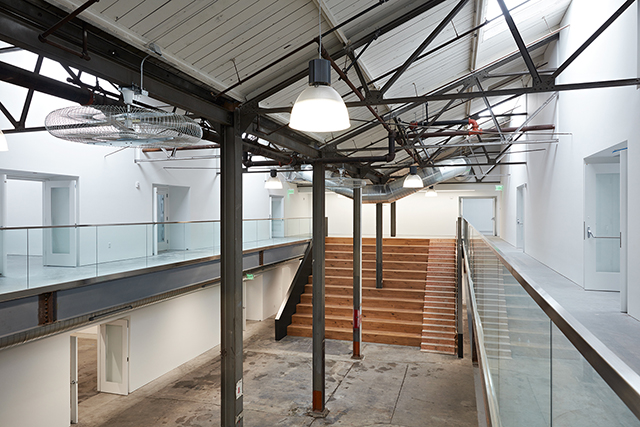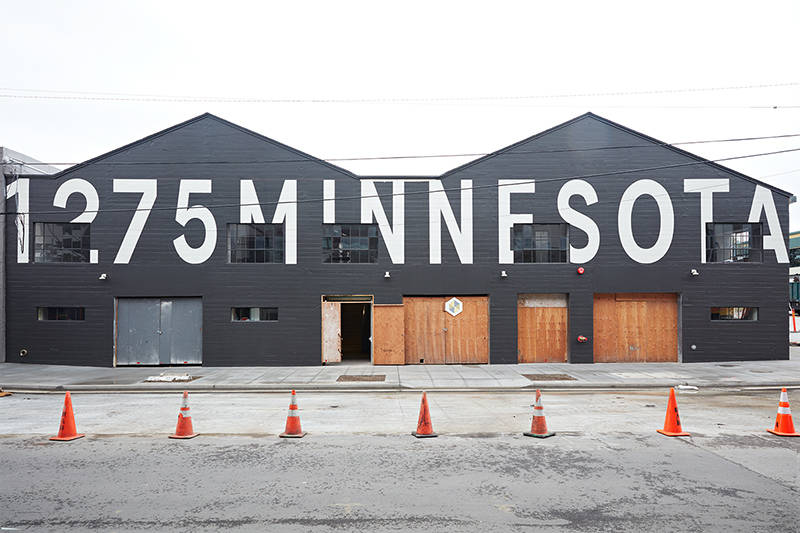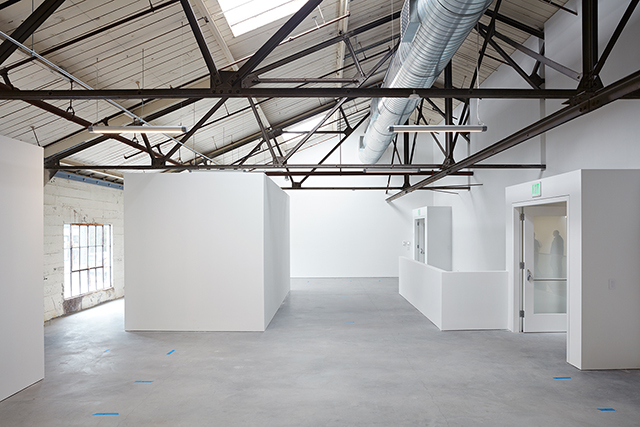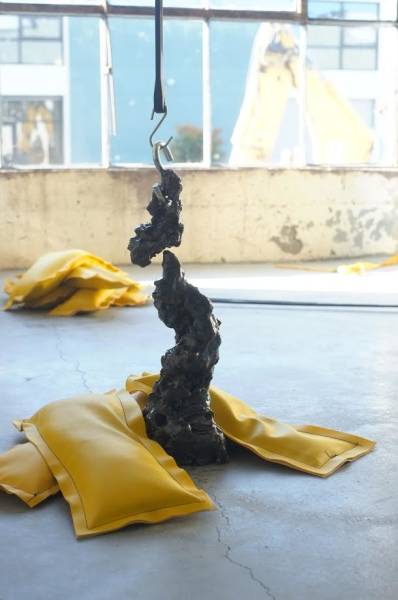The challenges facing San Francisco’s art community are myriad, and their causes range from the actions of individual landlords to global economic trends. Many individuals and organizations are searching for ways help the arts prosper, from crowdfunding art projects to establishing non-profit asset development trusts.
The Minnesota Street Project (MSP), opening to the public on Friday, March 18, aims to help stem the flow of artists and galleries out of the Bay Area. The three-building arts complex in San Francisco’s Dogpatch neighborhood is the new home for 10 galleries, one arts nonprofit, 35 artist studios, an art storage business, and a restaurant and bar (opening in the fall). The gallery spaces are rented at below market rate, and because of zoning restrictions, artists and galleries do not need to worry about being evicted to make room for offices or condos. The landlords would be unlikely to do that anyway.
Andy Rappaport, a retired venture capitalist and photographer, and Deborah Rappaport, a philanthropist and jewelry designer, undertook this project following a community discussion two years ago about the state of the arts in San Francisco. The Rappaports’ goals for MSP are to provide long-term stability to artists and galleries and to create a hub for contemporary art.

MSP is situated on the eastern edge of the so-called DoReMi (Dogpatch, Potrero, Mission) arts district, home to a number of relocated arts spaces and long-time residents. MSP’s Dogpatch neighbors include Workshop Residence, Romer Young Gallery, the Museum of Craft and Design, the Midway, and the San Francisco Art Institute’s graduate center. Nearby is California College of the Arts, Creativity Explored, fusedspace, San Francisco Center for the Book, Wattis Institute for Contemporary Arts, and several other galleries.
MSP is close to Muni and Interstate 280, yet it can still feel like it’s tucked in a far-flung corner of the city. The 10 resident galleries will host first Saturday openings (the opening month is an exception), a critical mass that might be able to quash the neighborhood’s perceived remoteness. Prior to the neighborhood’s ongoing atrophy, many art enthusiasts dutifully found their way downtown, one Thursday night a month, to the many openings at 49 Geary. MSP possesses the potential to command similar attention with a compelling and diverse calendar of shows. Several MSP galleries are former downtown tenants, including Anglim Gilbert Gallery, Nancy Toomey Fine Art (formerly Toomey Tourell Fine Arts), Rena Bransten Projects, and Themes + Projects (formerly Modernbook).




